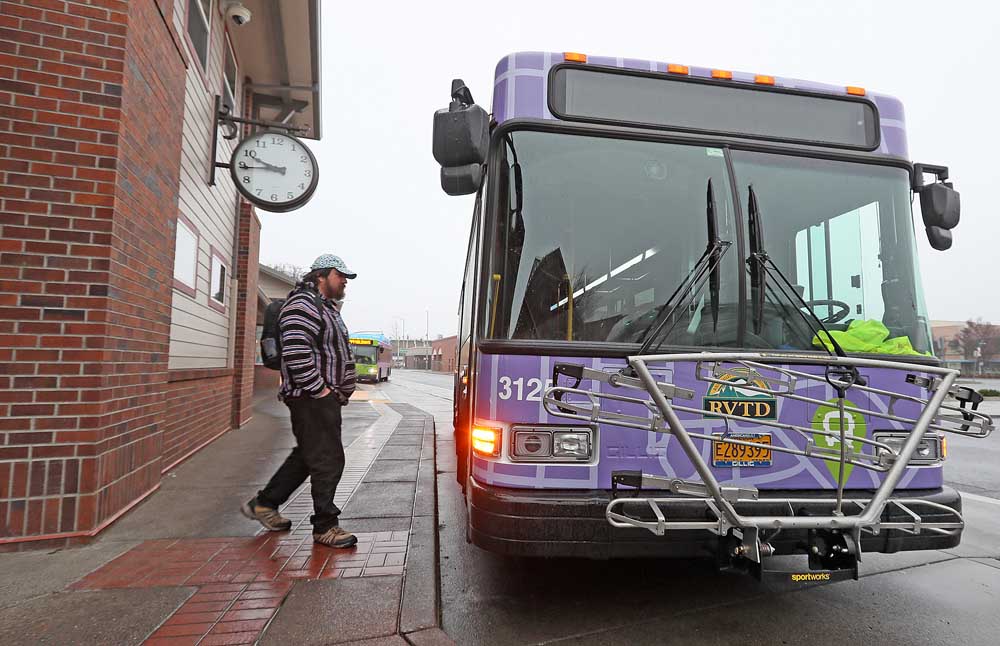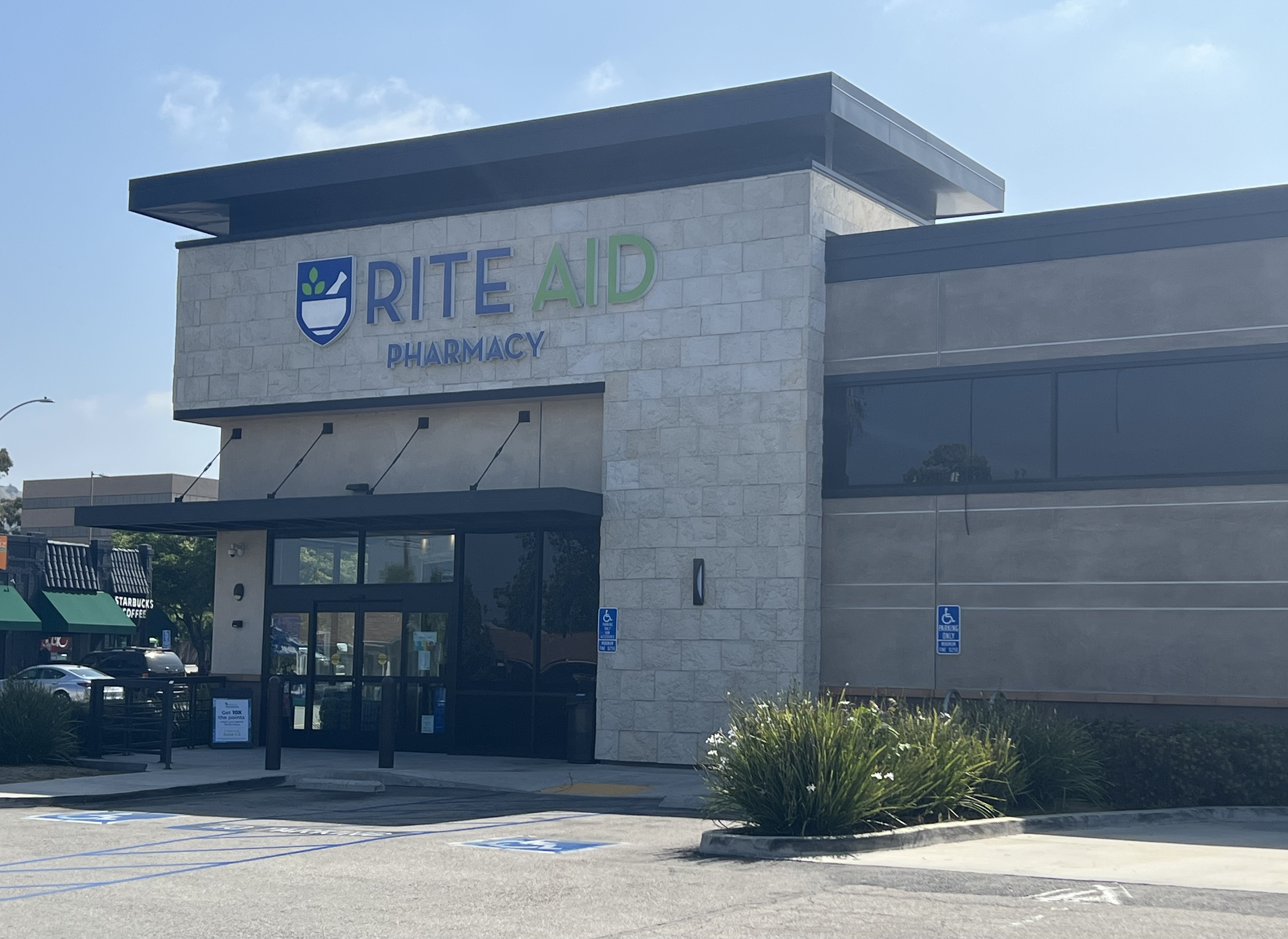Bus ridership around Rogue Valley lags pre-pandemic levels, RVTD says
Published 4:40 pm Tuesday, December 26, 2023

- Robert Aispuro, of Medford, waits for a bus at a Front Street station bus stop Dec. 22 in downtown Medford.
Bus ridership numbers in Jackson County continue to struggle after the double-whammy of the 2020 Almeda Fire and the COVID-19 pandemic.
“We’re doing better, but we’re still not back to where we were,” said Paige West, planning and strategic programs manager for Rogue Valley Transportation District.
Overall, RVTD saw a 65% drop in ridership after the pandemic hit in early 2020. This year, ridership has come back to 74% of pre-pandemic numbers.
Route 10, the most popular route in the 14-route system, is still down 32% from pre-pandemic levels.
The 2020 Almeda Fire took a major toll on this Medford-to-Ashland route, wiping out almost 2,500 mostly low-income residences in Talent and Phoenix.
“We saw an immediate drop in ridership on Route 10 after the fire,” West said.
Service industry jobs that are typically held by lower-income residents haven’t fully recovered in the valley, which means less people on buses, she said.
“I think the ridership gains are mostly going to come with job growth,” West said. “It’s mostly lower income people that are dependent on using RVTD services.”
From January to October 2019, RVTD had 1,013,734 riders and added four new routes to its system thanks to state grants.
During the same period in 2023, RVTD saw 747,610 riders, down 26% from 2019 but still better than during the pandemic years.
June 2023 was the best month this year, when ridership hit 83% of pre-pandemic levels.
When Southern Oregon University and Rogue Community College started more in-person classroom time, RVTD’s numbers started going up. Typically, the two schools generate some 10 to 15% of total ridership. Still, enrollment at both schools hasn’t completely rebounded and more distance-learning classes are now being offered.
Vulnerable populations of the elderly and the disabled avoided the bus system during the pandemic, a trend that continues today.
“They have mostly stopped using transit across the nation,” West said.
Instead, they rely on Valley Lift vans. That’s an RVTD program that serves qualified older adults, individuals with disabilities and low-income individuals and families.
The ridership numbers for Valley Lift are doing slightly better than the bus routes. The 2023 Valley Lift numbers are 19% behind 2019 ridership numbers. June was also the best month for Valley Lift, only 8% lower than June 2019.
West said the Valley Lift program generally costs about the same to operate if the rides are within a city but are more expensive if someone wants to travel from say Eagle Point to Ashland.
While ridership is down for RVTD, another issue for bus drivers is increased traffic.
Routes have been delayed as buses struggle to navigate through congested areas, particularly in north Medford.
Historically, bus drivers expected more congestion during the morning and evening rush hours, with a lull between 10 a.m. and 3 p.m.
Now, traffic is peaking during midday hours.
The increased congestion during the day may be because many workers are still working remotely but are trying to do errands or appointments during the middle of the day, West said.
She said late buses are an issue for riders who are trying to get to work on time.
It’s too early to predict when ridership might hit pre-pandemic levels, but RVTD remains committed to maintaining its existing 14 routes.
“We’re not at that point where we say that route is not doing good, so let’s forget it,” she said.
RVTD continues to examine its overall operational expenses to deal with lower ridership numbers.
At the same time, state grants through the Oregon Department of Transportation have been cut back.
“We are really in this strange state of trying to keep our routes intact,” West said.
Route 17 in Ashland, the newest route in the system, started this spring, but in October had only 479 total rides.
“A lot of routes will start out that way,” West said.
She said it can three years to build ridership on a route.
West said that once the service sector of the economy rebounds it should increase ridership.
Other factors that could boost ridership on all routes is gas prices. When they get high enough, it causes ridership to skyrocket, West said.
RVTD is modernizing its bus fleet and making sure it is ready to provide transportation in times of disaster.
Thanks to a $4 million grant this year supported by Democrat U.S. Sens. Ron Wyden and Jeff Merkley of Oregon, RVTD will buy six hybrid diesel/electric buses.
This is in addition to its fleet of natural gas buses.
West said the natural gas buses could be problematic to operate in times of disaster when gas supplies could be disrupted.
RVTD maintains a supply of renewable diesel in underground tanks, which would allow the hybrid/electric vehicles to continue to operate for some time if deliveries are interrupted.
“We can’t be 100% reliant on one fuel source,” West said.






